Ah, wooden abstract games! Not every game needs to have a flashy theme. Sometimes beautifully and refined wood is more than enough, and sometimes a nice chess set or a wooden game like Quarto can also function perfectly well as a display piece. Tucker’s Fun Factory has (re)released two games by game authors Ellis Hendriksen and Arvid Klaversteijn in a new look.

Colour Collect
Colour Collect is an abstract game in which two players control the same pawn to collect coloured discs. The player who is the first to collect three discs of the same colour wins the game. Colour Connect was devised by Arvid Klaversteijn and is based on the game Pawn Stop by the same author. In that game, too, players tried to be the first to collect three discs in the same colour. The difference between the two games is that Colour Connect has a wooden playing board and Pawn Stop used a set of coloured tiles to form the playing board. Pawn Stop therefore had a variable game board, but Colour Connect is a lot quicker to set up.
At the start of a game of Colour Connect, players set up the game board by placing a variety of different coloured tiles on the game board. There should not be too many pieces of the same colour lying adjacently. Exactly how many pieces this involves is somewhat ambiguous based on the rules, but at least no more than two chips of the same colour should be next to each other.
While we are on the subject of the rules of the game, this is a point I would like to be fairly critical of. Now it so happens that, as a lawyer, I am hugely critical of the wording of rules and especially the structure thereof. Colour Collect’s rules are very simple enough, but they are fairly unclearly defined in the rulebook and, in my opinion, essential information is missing, or perhaps information or certain explanations have been omitted. The above is especially true for the different gameplay variants. Nobody wants an overtly long rulebook for a relatively simple game, but the pitfall for rules for this kind of game is precisely a too concise wording.

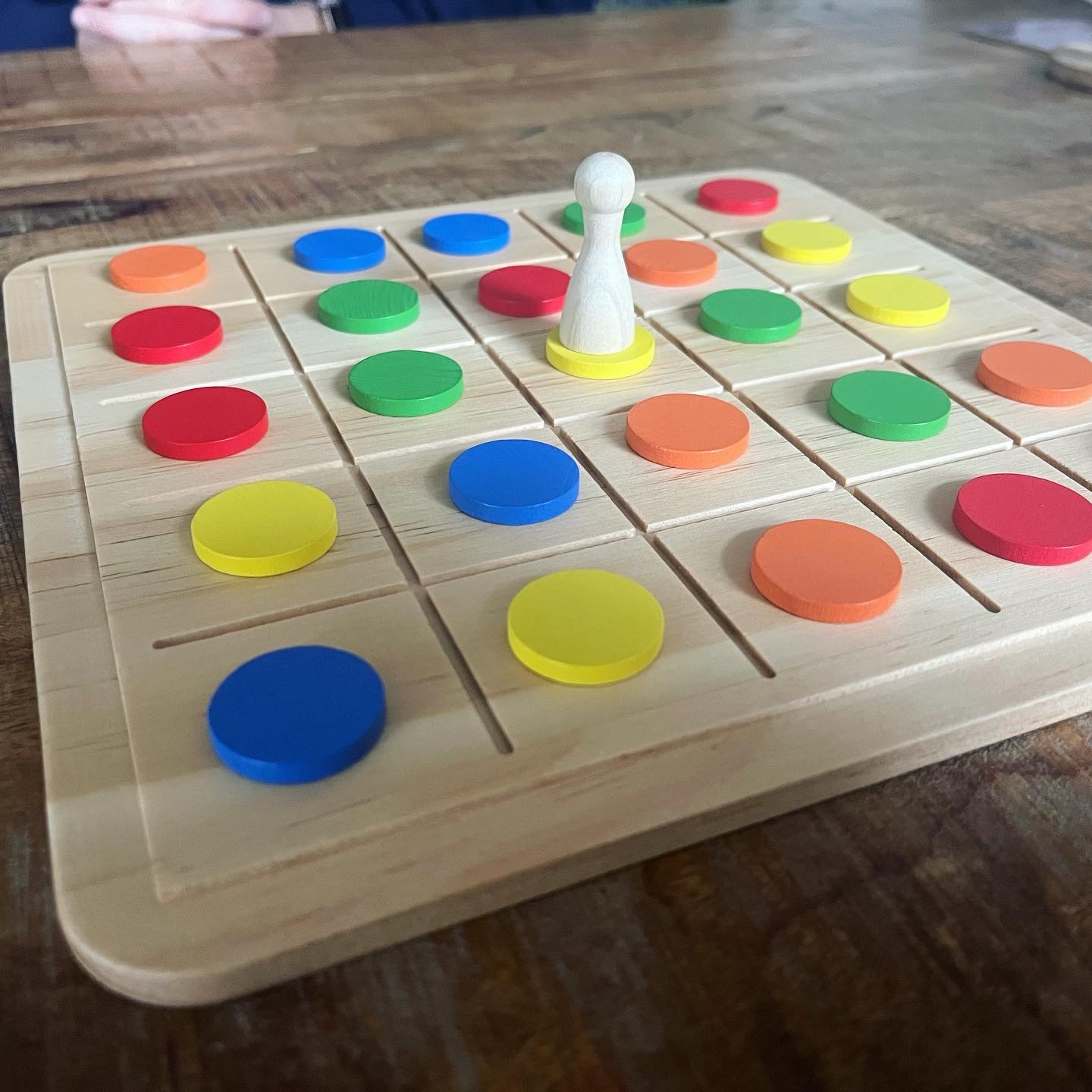
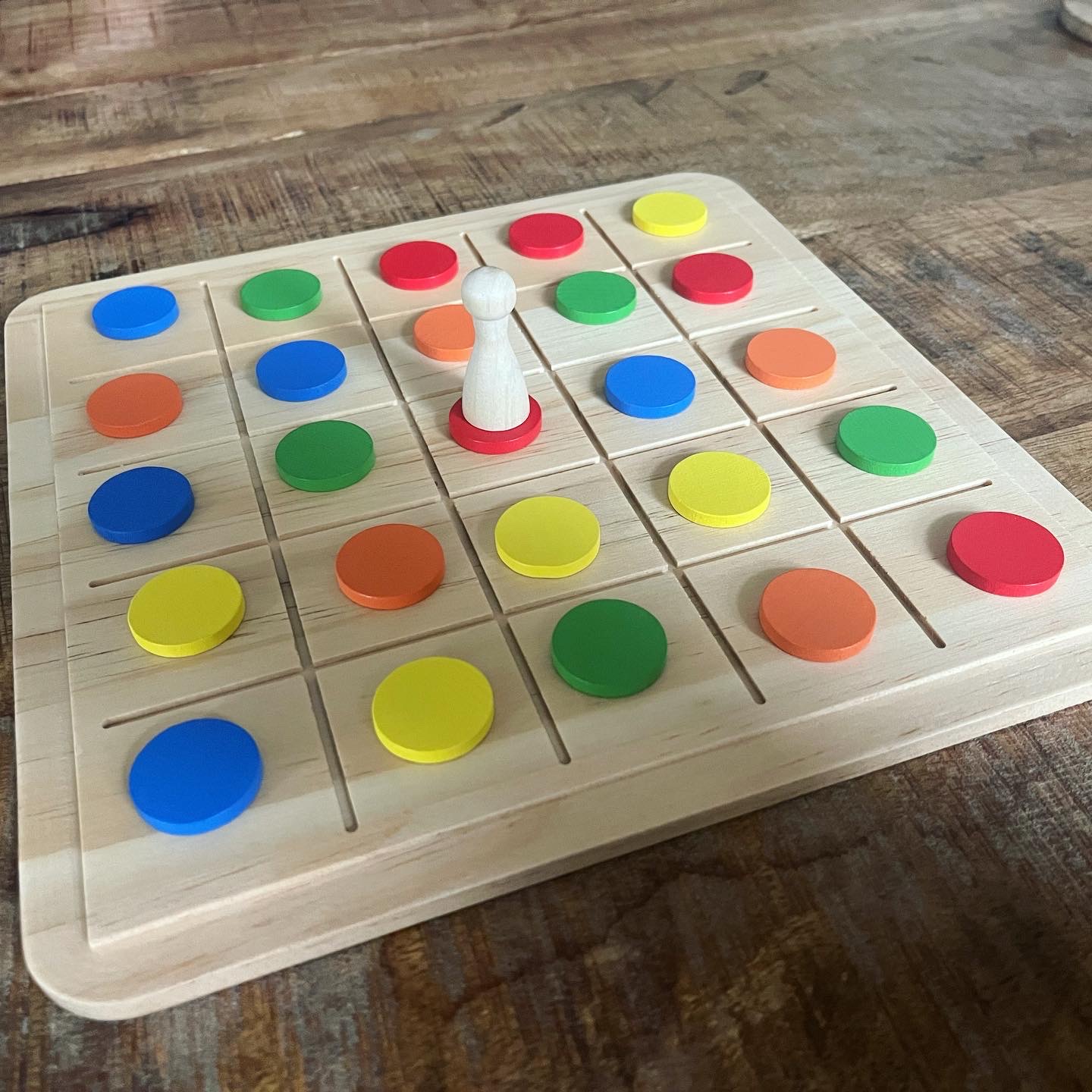
But enough about the rules, because after some puzzling and fiddling with the rules (and reading Pawn Stop’s original rules), you are gaming in no time at all.
After setting up the game, players put the pawn in the middle and the player who is not the starting player may take the token where the pawn is placed. This player already has a token. Players take turns to move the pawn orthogonally to the next token (if possible). The token on which the pawn lands may be taken. Once you have three tokens of the same colour, you have won a round. Whoever wins agreed amount of rounds (e.g. best out of three), wins the game!
Colour Connect is a highly entertaining and abstract game of which you quickly play several games in a row due to its fast gameplay. The simple gameplay is just strong and reminds me of the abstract classics. Just chuck your game of checkers aside and grab Colour Collect.
Conquer the Throne
Conquer the Throne, by Ellis Hendriksen, has also previously appeared in a similar variant as Up & Across. In Conquer the Throne, players try to be the first to get two of their three crowns across the board. However, crowns cannot just be moved, as they have to move up and down via thrones without touching the ‘ground’.
Players each have a set of thrones in three different heights and about three crowns. During a turn, they can move their crowns via the thrones. In doing so, they must always step up and/or down. If players choose to move crowns, they can divide three steps of their choice among their three crowns. Crowns may also move via the other player’s thrones.
A player may also choose to move two different of their thrones during a turn. A throne with a crown cannot be moved. The amount of steps a throne must move depends on its height. A small throne moves 1 step, a medium throne moves 2 steps and a large throne moves 3 steps. You may move thrones in any direction: orthogonal, diagonal, you name it. However, you must always complete a movement. You may hop over another throne, but not finish on the same square as another throne. When you reach the wall, you bounce through in the mirrored direction. By placing the thrones correctly, you can block the other player, accidentally help them and make sure you can move your crowns. Try to string together the right actions.
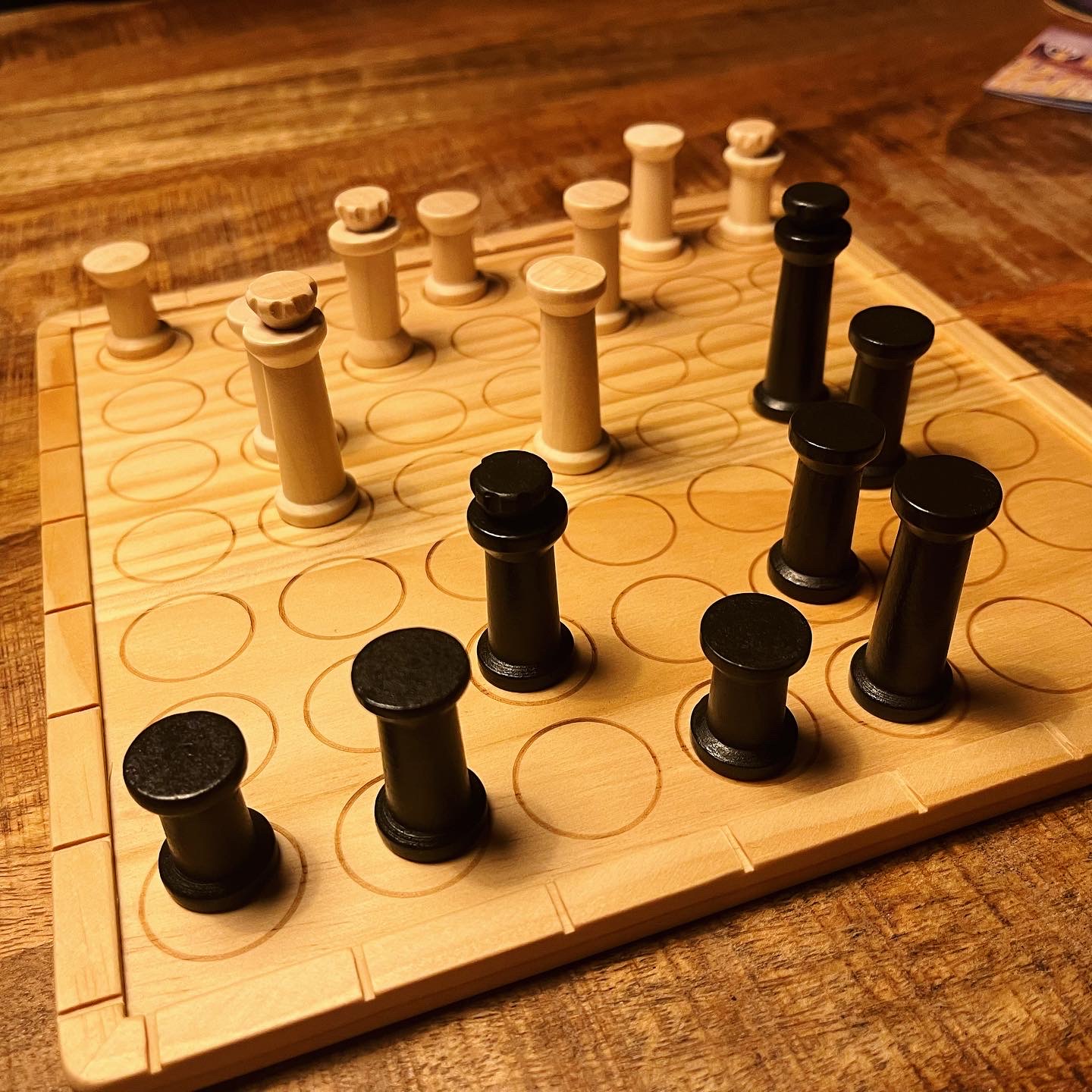
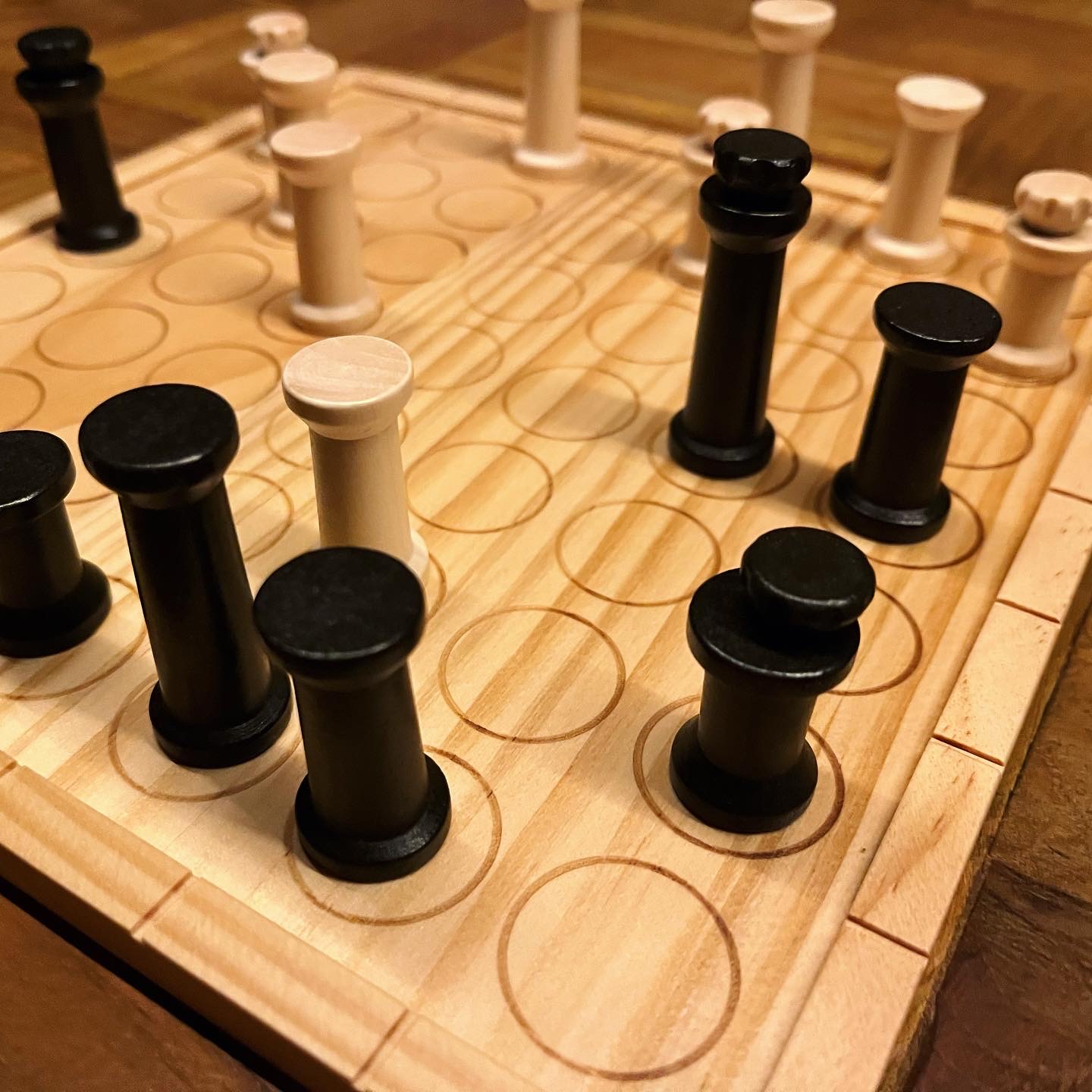
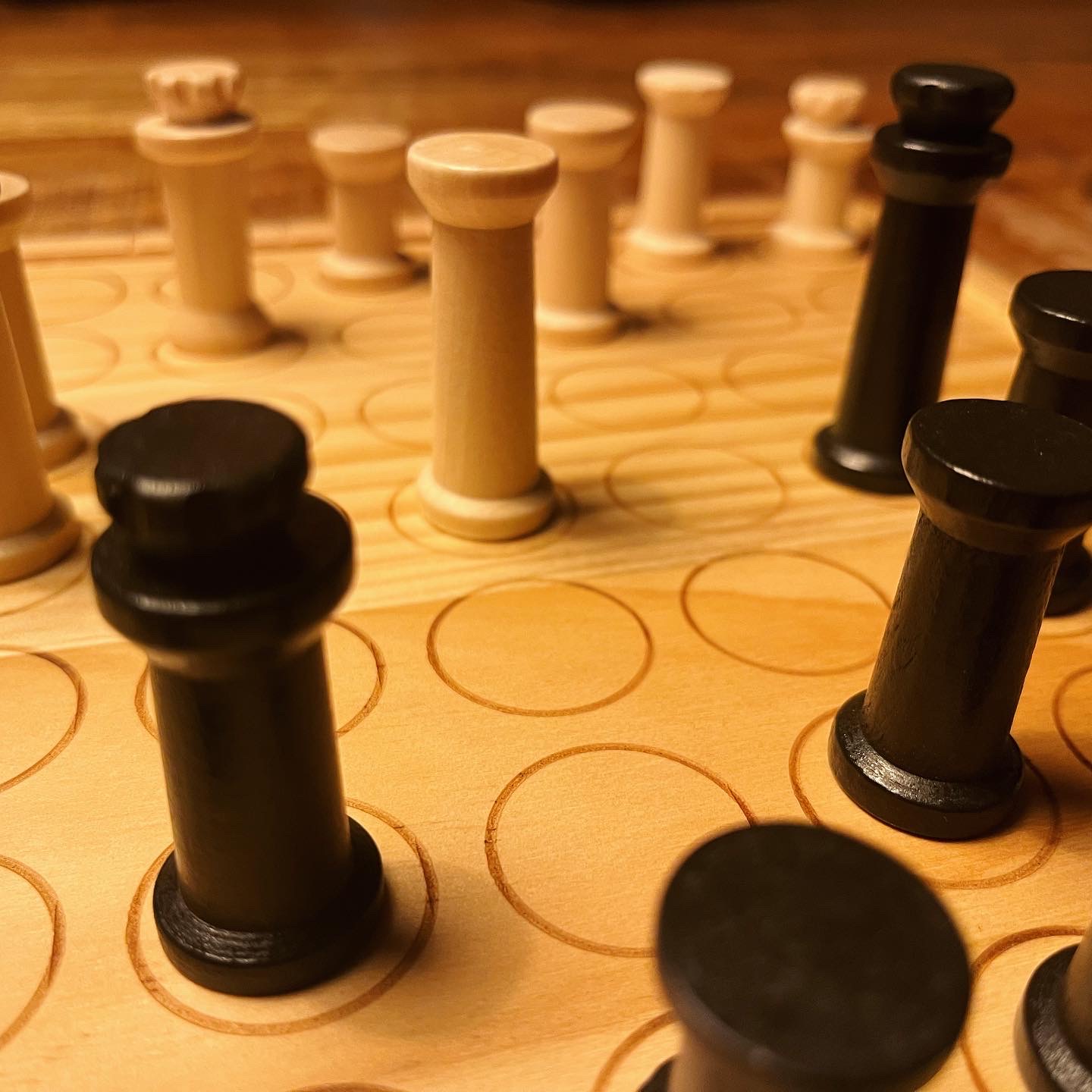
Like Colour Connect, Conquer the Throne is a wonderfully simple abstract game. Conquer the Throne does turn your thinking upside down by the difference between the thrones and crowns, and your spatial awareness is put to the test by this, making it fun puzzly combat.



